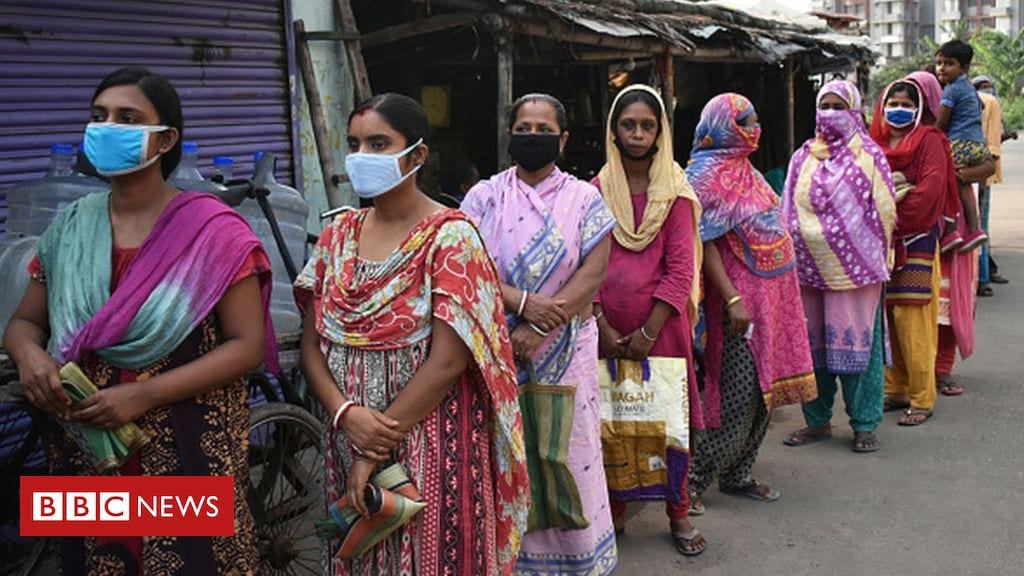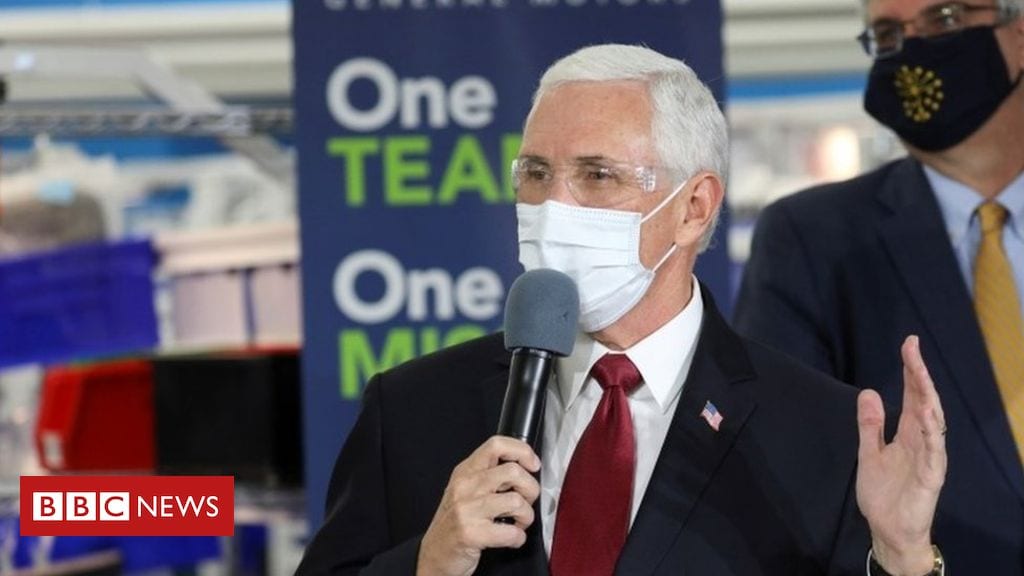[ad_1]
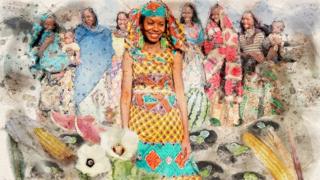
Ancient knowledge is shared among indigenous communities across the Sahel in Africa
Indigenous people account for less than 5% of the world’s population – but they support or protect 80% of the planet’s biodiversity.
They are often the most vulnerable to climate change, but have developed systems built on thousands of years of land management, sustainability, and climate adaption.
Dr Koko Warner from the United Nations climate change secretariat says their participation in fighting global warming is vital.
“I am really hoping for a future scenario where by combining and blending and growing our value systems together, human beings will develop new practices that can be a positive force in nature,” she said.
But where did this ancient knowledge come from and do these practices really work? As the world marks the 50th anniversary of Earth Day, here are five stories about climate pioneers who are digging deep into their history.

The Sahel: Greening parched earth
Across the Sahel in Africa, ancient farming techniques are helping to breathe life back into parts of the semi-arid region.
The traditional practice of Zai was revived in Burkina Faso in the 1980s. Small pits are dug in the ground and filled with compost, manure and seeds before the rainy season begins.
They help to trap scarce water – a necessity with unpredictable and declining rainfall due to global warming – and also improve the soil’s fertility.
The traditional practice is used across Niger, Mali, Senegal and Chad and can also ease food insecurity.
Hindou Oumarou Ibrahim, an indigenous woman from a Mbororo pastoralist community in Chad, says Zai is known locally as “Karal” or “Buriye”.
She describes how traditional techniques are also used in parts of Chad prone to flooding.
“Seeds are generally planted after the main rains have ended but when the earth is still moist,” she says.
The pastoralists have developed a “holistic” approach to agriculture, recognising up to seven seasons, depending on the area’s history, location, and conditions.
Astronomical and meteorological observations can play a large part in timing the planting of crops such as peanuts, okra, beans, maize and more recently watermelon.
“Our people have survived for centuries,” says Ms Ibrahim. “We’re already proof that it works.”

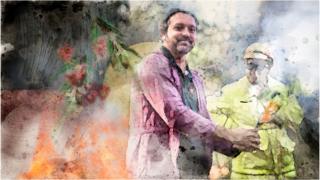
This man predicted Australia’s wildfire disaster in the middle of 2018
Australia: Fighting fire with fire
For millennia, Australia’s Aboriginal people have burned land to keep it healthy, improve biodiversity, generate food, and prevent the spread of wildfires.
The ancient land management tool is grounded in cultural and spiritual connections with the earth.
Victor Steffensen, an indigenous fire practitioner, has been teaching “cultural burning” for two decades.
He had predicted the country’s bushfire disaster in the middle of 2018.
“It was a massive wakeup call,” he says. “The land was sick because it wasn’t being properly managed with climate change. Fire plays a big part in that management.”
Thirty-four people died, one billion animals were wiped out and some 3,000 homes were either damaged or destroyed.
Indigenous burning practices vary across Australian ecosystems. It is a delicate and calculated process.
Fire is controlled and timed when conditions are believed to be right with the environment, weather and season.
The burning is kept low in size and intensity to give animals time to flee and to protect forest canopies.
This also clears the floor’s litter layer and shrubs to help create natural fire breaks.
“It’s a science that’s layered on so much information that’s been developed over thousands of years,” he says.
Mr Steffensen also visits indigenous communities in the US and Canada to exchange knowledge of fires.
“It’s an exciting time to reconnect with our landscapes. We’re finding a lot of similarities between our trees, our soils and our grasses,” he says.
Since Australia’s bushfire season, there has been greater interest from Western agencies to involve indigenous techniques.
Mr Steffensen welcomes the attention but calls for greater co-operation.
“It needs to be a decolonising process where agencies don’t dominate and exploit indigenous communities.”

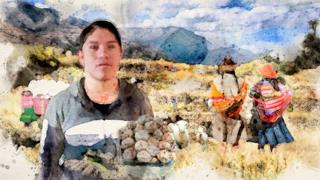
Revitalising terrace farming in the Andes to save water and prevent soil erosion
The Andes: Follow the Inca trail
Machu Picchu in Peru is an iconic example of a terrace farm where the Incas grew crops between stone walls dug into the cold, high earth of the Andes mountains.
The ancient technique produced food on slopes in tough conditions.
It yielded varieties of fruit, nuts, vegetables and spices with the use of llama and alpaca dung as fertiliser.
Many terraces still exist, scattered across a million hectares in the Peruvian Andes – but are in poor condition.
“We neglected them,” says Wilson Ccasa, a 28-year-old farmer from the indigenous Quechua community.
Mr Ccasa comes from the southern rural area of Pallqa.
He joined a largescale effort to restore some of the abandoned terraces in his locality last year where the area available to grow corn was doubled.
In the face of climate change, terracing increases land space, reduces water use, and prevents soil erosion.
The stone walls also absorb the sun’s heat during the day and release it into the soil at night when temperatures drop.
“Climate change does exist,” says Mr Ccasa.
“We’ve had abrupt changes in weather like drought and hailstones. If you come to our countryside, you’ll believe it.”


The Kayapo people invented a seed bank in the middle of the Amazon hundreds of years ago
The Amazon: Growing the Ultimate Garden
The richness of the rainforest’s ecology is largely thanks to millennia of indigenous agriculture, according to an in-depth scientific study of the Amazon.
The diversity of indigenous people, made up of around 400 ethnic groups, is as rich as the foods they produce.
Gardens vary from region to region where many grow hundreds of edible species.
They also serve as a gene bank, protecting against pests and adapting to weather changes.
When the gardens reach maturity, they are abandoned to allow the forest to regenerate.
Bedjai Txucarramae, an indigenous leader of the Kayapo people in Brazil’s eastern Amazon, definitely has green fingers.
“Growing your own food is much better than buying it in the city,” says the 76-year-old.
“This is why my health is so good and I feel so strong despite being old.”
His community grows 56 types of sweet potatoes, 46 types of cassava, 40 types of yam and 13 types of maize.
The varieties are the result of several centuries worth of cultivation from cloning and exchanging seeds with other villages to improve their own gene bank.
The Kayapo developed these practices long before modern scientists created seed banks to guard against environmental catastrophes that could impact food security worldwide.
Mr Txucarrame believes that if the weather gets hotter and drier in his region, as scientists predict it will, many varieties of their crops will survive and some might actually benefit.

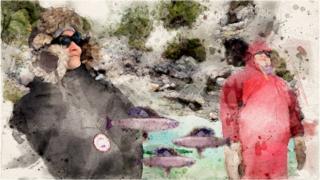
How the Arctic has brought the Sami people and a Finnish climate scientist together
The Arctic: Reshaping Waters
The Arctic is particularly vulnerable to climate change with temperatures rising faster than most other parts of the planet.
As a result, the culture and livelihoods of the more than 40 indigenous groups living across the US, Canada, Russia, Finland, Norway, Sweden and Greenland are being directly affected.
“They’ve survived one of the world’s harshest regions for thousands of years, but we’re now seeing a new normal” says Dr Tero Mustonen, a Finnish climate scientist.
He is the director of the non-profit organisation Snowchange which works on climate adaptation projects combining Western science with indigenous knowledge.
Snowchange recently backed an extensive restoration project led by Skolt Sami Pauliina Feodoroff in Näätämö Watershed, Finland.
For over a decade, her indigenous community has experienced warming waters that led to significant changes in fish populations.
This wasn’t the only problem.
Climate change, coupled with nearby industrial activity, had also altered the water’s pathway.
Two indigenous Sami elders were enlisted to remember and remap the Vainosjoki river in its more original size and form.
Their knowledge formed a detailed map where specific old boulders and rocks were identified and moved back.
“Fish spawn in the same place they were born. Old positions of rocks and boulders can recover these lost nurseries,” says Ms Feodoroff.
The community saw the return of cold water fish such as trout and grayling as well as whole supporting ecosystems involving birds and insects.
“Our chance of surviving and mitigating global warming needs to be guided by the wisdom of local communities,” says Dr Tero Mustonen.
“We can’t afford to ignore them anymore.”
Additional reporting by Stefania Gozzer and Joao Fellet.
Illustrations by Elaine Jung.



